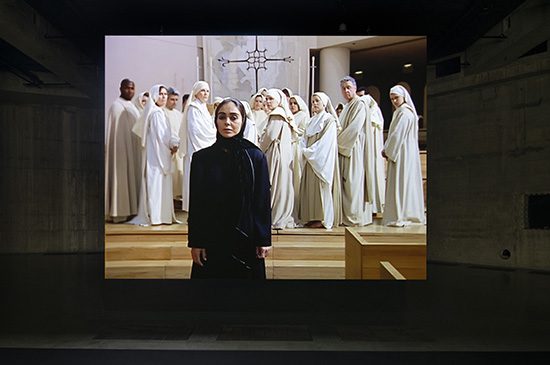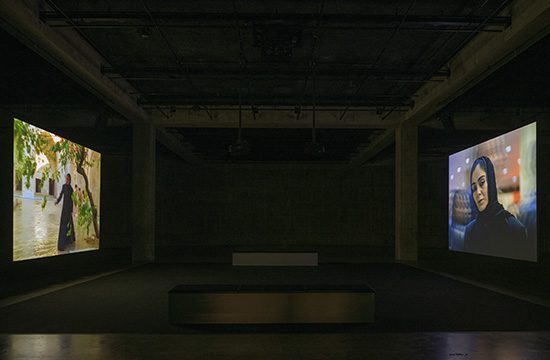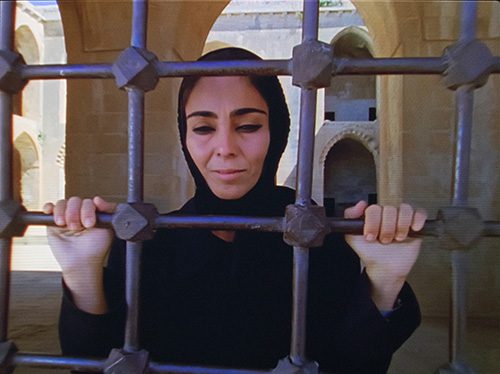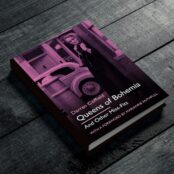Iranian-born artist Shirin Neshat is best known for her striking monochromatic aesthetic and video works that depict a kind of heightened reality, or human surrealism. Soliloquy (1999) – made the same year Neshat won the Golden Lion at the Venice Biennale for her short film Turbulent – is one of her early double channel video works and unusually, features colour as well as the artist herself in the main role.
While Neshat has stated that the film is not biographical, it draws on her personal experience of living in an ‘in between’ state. Neshat left Iran at the age of 17 to continue her education in the US, and when she returned in 1990, it was in the wake of dramatic cultural changes following the 1979 Islamic Revolution. Her artistic engagement with the country’s political landscape – first through a series of photographs entitled Women of Allah (1993–97) – led to her exile, and since then, she has remained in the US and continued to make work that explores ideas of conflict and displacement.

Solioquy depicts the artist in two distinct urban landscapes: Mardin in Turkey, and New York, where Neshat has now lived for many years. For most of the seventeen and a half minute duration of the work, the action alternates between the cities so that when Neshat is active on one screen, her alter ego in the other projection is still, often staring directly into the camera as if watching. The viewer, meanwhile, is placed in a void between the two settings – ‘East’ and ‘West’ – as the projections play out on opposite walls of the dark gallery space, highlighting a sense of fracture and dislocation.

As with much of Neshat’s work, the film was collaboratively made with music by Iranian composer Sussan Deyhim and cinematography by Ghasem Ebrahimian, and shot on 16mm film before being transferred to video for editing. It has been replicated into six copies, and acquired by various institutions around the world, including the Tate Modern.
‘Soliloquy’ by Shirin Neshat is on view in The Tanks space in the Blavatnik Building at Tate Modern until 7 February 2021. Please note: Tate Modern is currently closed due to pandemic restrictions, for updates visit : tate.org.uk

Millie Walton is a London-based art writer and editor. She has contributed a broad range of arts and culture features and interviews to numerous international publications, and collaborated with artists and galleries globally. She also writes fiction and poetry.




















